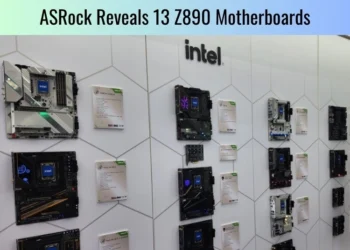ASUS has provided an early look at the motherboard that will power its upcoming Vivobook S 15 laptop. Schematics and photos shared on social media uncover some exciting design choices implemented by ASUS that could have significant implications for performance and upgradeability.
Let’s break down what this leaked peek at the S 15’s motherboard means for the laptop and its capabilities.
A Powerful Pairing: Snapdragon X Elite and Soldered RAM
The motherboard is confirmed to house Qualcomm’s top-of-the-line Snapdragon X Elite processor. As the flagship Snapdragon chip, the X Elite brings formidable speeds and feeds to power through demanding workloads. Two Micron-branded RAM modules are paired directly next to the processor, indicated by white tracing. Having the RAM placed so close maximizes communication speeds between the two crucial components.
This soldered RAM configuration is similar to Apple’s unified memory approach but differs in one fundamental respect. While Apple permanently integrates RAM into the CPU die, ASUS opts to solder separate DRAM chips beside the chipset. Both lessen the delay for data transfers compared to sockets, but ASUS retains the option for RAM upgrades. Power users will gain peace of mind knowing their Vivobook S 15’s memory can be expanded.
Staying Cool Under Pressure
The Vivobook S 15 requires impressive cooling to maximize the X Elite’s processing prowess. ASUS addresses this with a robust dual-fan setup assisted by two large heat pipes. This multi-pronged cooling solution aims to keep temperatures in check, even during intense productivity sprints or gameplay. Its design would allow the X Elite to operate at higher thermal design power levels as needed.
By preventing throttling, users can stretch the Snapdragon chip’s legs and unlock the performance enabled by its dedicated neural processing unit or NPU. Thanks to this cooling system, the 45 total tensor operation tops of raw AI power will find their full expression. Gamers and creatives especially stand to benefit.

Image Credit: WCCFTech
Upgradeability and the Empty M.2 Slot
Close examination of the motherboard revealed one last notable aspect—an unoccupied M.2 slot. This leaves the door open for speedy storage upgrades down the line. The slot supports the latest PCIe Gen 4 standard, so users can install faster solid-state drives as needs and budgets allow.
The stark contrast to Apple’s approach is refreshing. Where Apple silicon Macs give users no avenue to change the onboard flash memory, ASUS builds future-proofing into its design. Power users on tighter budgets may choose a lower-capacity SSD initially and upgrade later without replacing the whole system. A slight touch goes a long way toward longevity and satisfied customers.
Final Thoughts
This early look inside the ASUS Vivobook S 15 prototype suggests good things are in store. Between Qualcomm’s potent Snapdragon X Elite silicon, speedy soldered RAM, and ample cooling, the foundations are there for solid performance. Factor in that empty M.2 slot for flexible storage expansions down the line, and this laptop will remain competitive over a long product lifespan.
ASUS paid attention to balancing both potent specs and user upgrade options. If the rest of the Vivobook S 15 spec follows form, this laptop could be a versatile powerhouse for its class upon release. Now, all that’s left is to get our hands on the final review unit!


















